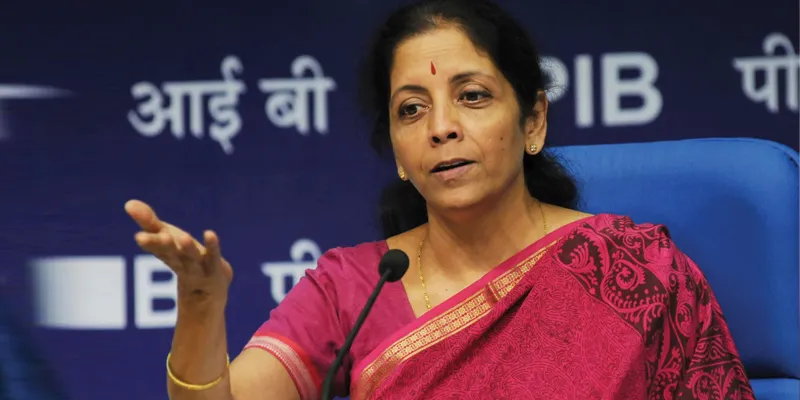Finance Minister Nirmala Sitharaman announces plan to merge 10 PSBs into four entities
The government has introduced a mega plan to merge 10 public sector banks into four as part of plans to create fewer and stronger global-sized lenders as it looks to boost economic growth from a five-year low.
The government on Friday unveiled a mega plan to merge 10 public sector banks into four as part of plans to create fewer and stronger global-sized lenders as it looks to boost economic growth from a five-year low.
Finance Minister Nirmala Sitharaman, who had last week announced tax sops and measures for sectors such as auto, announced four new set of mergers -- Punjab National Bank, Oriental Bank of Commerce and United Bank of India will combine to form the nation's second-largest lender; Canara Bank and Syndicate Bank will merge; Union Bank of India will amalgamate with Andhra Bank and Corporation Bank; and Indian Bank will merge with Allahabad Bank.

Union Finance Minister Nirmala Sitharaman
The exercise, seen together with the previous two rounds of bank consolidation, will bring down the number of nationalised public sector banks to 12 from 27 in 2017. This, the government feels, will make bank balance sheet stronger with greater capacity to lend.
Oriental Bank of Commerce and United Bank merger will merge into Punjab National Bank to create a bank with Rs 17.95 lakh crore business and 11,437 branches, Sitharaman told a news conference here.
The merger of Syndicate Bank with Canara Bank will create the fourth largest public sector bank with Rs 15.20 lakh crore business and a branch network of 10,324. Andhra Bank and Corporation Bank's merger with Union Bank of India will create India's fifth largest public sector bank with Rs 14.59 lakh crore business and 9,609 branches.
The merger of Allahabad Bank with Indian Bank will create the seventh largest public sector bank with Rs 8.08 lakh crore business with strong branch networks in the south, north and east of the country, she said, adding that Bank of India and Central Bank of India will continue to operate as before.
Last year, the government had merged Dena Bank and Vijaya Bank with Bank of Baroda, creating the third-largest bank by loans in the country.
After the mergers, the country will have 12 public sector banks, including State Bank of India and Bank of Baroda. Also, Indian Overseas Bank, Uco Bank, Bank of Maharashtra and Punjab and Sind Bank, which have strong regional focus, will continue as separate entities.
The finance minister also unveiled governance reforms in public sector banks, saying their boards will be given autonomy and enabled to do succession planning.
Also, bank boards will be given flexibility to fix sitting fee of independent directors, she said, adding that non-official directors will perform role analogous to independent directors.
"To make management accountable to board, board committee of nationalised banks to appraise performance of general manager and above including managing director," she said.
Post consolidation, boards will be given flexibility to introduce chief general manager level as per business needs. They will also recruit chief risk officer at market-linked compensation to attract best talent.
Sitharaman had last week unveiled the first of three planned stimulus packages that included a reduction of taxes, improvement of liquidity in the banking sector (formal and shadow), increased government spending on auto and infrastructure, and accelerated refunds of goods and services tax (GST).
This was followed by liberalisation of foreign investment rules in four sectors including coal mining, contract manufacturing, single brand retail and digital media.
(Edited by Megha Reddy)









